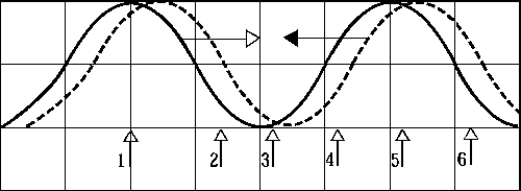Multiple Choice
 One wave moves to the right and a second wave (reflected) moves to the left to form a stationary wave. At which point(s) does the stationary wave have a node?
One wave moves to the right and a second wave (reflected) moves to the left to form a stationary wave. At which point(s) does the stationary wave have a node?
A) 1
B) 3 and 5
C) 2
D) 4 and 6
E) 2, 4, and 6
Correct Answer:

Verified
Correct Answer:
Verified
Related Questions
Q5: <img src="https://d2lvgg3v3hfg70.cloudfront.net/TB6080/.jpg" alt=" The figure represents
Q6: The figure shows a standing wave in
Q8: <img src="https://d2lvgg3v3hfg70.cloudfront.net/TB6080/.jpg" alt=" Two loudspeakers S<sub>1</sub>
Q10: Four pendulums are hung from a light
Q11: The third harmonic of a tube closed
Q11: A string of linear density
Q41: A stretched string of length L,fixed at
Q47: The wave function y(x,t)for a standing wave
Q55: Standing waves exist in a string
Q70: When a piano tuner strikes both the